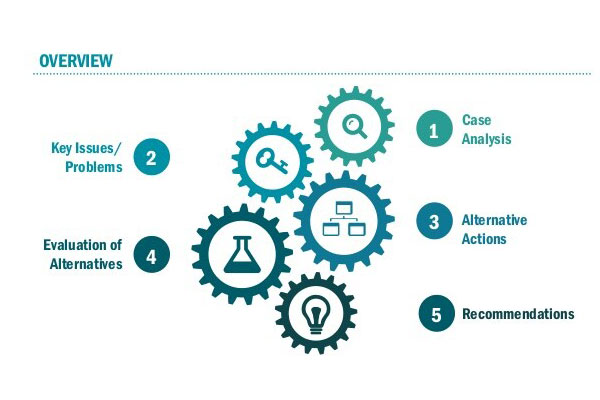From the beginning of humankind, one thing always becomes constant despite other things like natural catastrophe, extinction, or evolution. From the first breath people take on this world, they always try to cover their whole body or partial body with everything they have as cloth. Yes, people, clothes are one of the things which become constant for humankind in this world.
From the tree bark found in the forest to today’s fashionable clothes, the fashion industry and the apparel industry always try to produce some trendy clothes for the people of the Earth. In today’s world, the fashion industry is a multibillion-dollar global enterprise devoted to making and selling clothes, making them one of the most profitable businesses in the world.
From 1818 April, starting of Brooks Brothers, numerous fashion brands along with clothing brands comes & goes. Some clothing brands like Nike, Louis Vuitton, Gucci have remained in the industry for years & they actively operate till now from their start. Some clothing brands like Delia’s, Wet Seal, and Arden B took place on people’s memory despite being increasingly popular for quite a time.
Today, we know about one of the most iconic global fashion brands, ZARA, which is a wonder in the fashion industry because it never incurred losses after its establishment till the covid pandemic happened. Nowadays, ZARA has more than 300,000 employees in over 2,200 stores throughout 88 countries.
Related: Volvo- A Brand Loyalty Any Entrepreneur Wants
About ZARA

ZARA was established as a kind of a family business in 1975 by Amancio Ortega with Rosala Mera in the Galician downtown, in the northern portion of Spain. Its initial shop offered low-priced knockoffs of popular, higher-end apparel and fashion items quickly expanded. ZARA’s fashion framework and business strategy gained momentum with its Spanish customer over the following eight years. This resulted in the establishment of nine new shops in the country’s largest cities.
ZARA gradually extended its dominion from its birthplace of Spain towards the rest of the world and, subsequently, to the neighboring country of Portugal. By the 1990s, the company had grown through into the United States, France, and most of Europe, among other countries. As of now, ZARA operates about 2,200 shops in 88 countries across the globe.
Inditex was established in 1985 as a holding company, laying the foundation for a distribution system known as “instant fashion.” Ortega pioneered a breakthrough design, manufacturing, and delivery method to reduce lead times and react quickly to changing fashion trends. The driving forces behind this shift were a significant investment in research and development and the utilization of groups rather than individual developers for the crucial “design” aspect.
ZARA started its online shop in September of that year. The website was launched in Spain, the United Kingdom, Portugal, Italy, Germany, and France. In November of the same year, ZARA Online expanded its operation to five additional regions of the world. E-commerce sites first appeared in the United States in 2011, Russia and Canada the next year, and South Korea, Romania, India, Brazil, & Peru.
In 2014, ZARA made usage of RFID technology through its retail locations. It is very simple to locate a product not out on the shelf using the RFID tag. According to Interbrand’s annual ranking of the world’s top global brands, ZARA was rated number thirty in 2015. According to the international fashion business Journal MDS, although the world’s textile commerce had decreased by 2.38% in 2019 due to the Covid-19 pandemic, ZARA’s had increased by 2.17%.
Strategic Plan of ZARA
ZARA is now on the verge of becoming one of the leaders of the fashion industry. Established by a school dropout, ZARA now has more than a fashion icon. All of it was possible because of their strategic plan, which is a role model for today’s entrepreneurs. Let’s see the main strategy of their business plan.
1. Introduction of Fast-Fashion

ZARA’s whole business & supply chain structure stood along on the fashion industry from the beginning with one of their unique concepts known as the fast-fashion concept. This whole concept is built, organized & developed by one of ZARA’s co-founders, Amancio Ortega.
Fast-fashion is a phrase used in the fashion business to describe the speed at which fashion retailers catch the newest trends based on recent major fashion shows. In other words, it describes how fashion trends move from the stage to big retail stores. Interestingly, fast fashion seems to be a strategy that focuses on creating and manufacturing popular fashion items quickly and affordably so that mainstream consumers may purchase the latest trend.
ZARA’s success has been attributed to its ability to quickly adapt to shifting fashion trends and incorporate them into its collections. ZARA recognized early on a huge market discrepancy that few apparel companies had successfully filled. This was to stay up with the newest fashion trends while offering inexpensive apparel lines of excellent quality.
ZARA simplified their design, production, and distribution operations to react swiftly to new fashion trends. That’s what Ortega named it. The ZARA approach for reducing the amount of time from design and manufacturing and consumption is globally recognized.
Mass manufacturing is key to fast fashion. Unlike fashion brand merchants that require time to design and produce goods, fast fashion brands replicate concepts via exhibition and utilize large-scale manufacturing and distribution to make products accessible rapidly. Fast fashion was not coined until the mid-2000s, but Ortega established ZARA on its ideas. ZARA’S retail shop became the initial shop that offered low-cost fashion goods that resembled high-end designer things.
Related: How Toyota Set Themselves Apart in Automobile Industry
2. Demand & Scarcity
ZARA spends next to nothing on advertising and marketing. However, the business has created a marketing approach that balances manufacturing productivity with client loyalty. ZARA’s marketing approach is to create an impression of strong demand despite low availability. This technique is addictive.
ZARA keeps creating scarcity by limiting the amount produced for a specific style. The less available a thing is, the more desired it gets. Another advantage of manufacturing smaller numbers is that there is less material to discard when a style fails to gain momentum and sales. ZARA only conducts two time-limited deals a year instead of continuous price reductions, and it reduces a far smaller percentage of its goods than its rivals, about half.
ZARA’s marketing approach is to create an impression of strong demand despite low availability. This technique is addictive. ZARA consumers will attend a retailer more often than other shoppers. They realize ZARA only manufactures a limited amount of fashion products. Once a design season, especially products, are gone, they’re gone.
3. Vertical Integration

ZARA’s vertical integration approach is noteworthy. The business also controls raw material procurement, product creation, marketing, sales, and distribution. Only a small portion of these functions are outsourced. ZARA has a lot of influence over how it works due to vertical integration.
The business optimizes manufacturing efficiency by having a relationship with suppliers located strategically across Europe by choosing production locations based on raw material availability, decreasing the time from sourcing to production. ZARA currently owns and manages over 2000 retail shops worldwide. It also has distribution capabilities that enable it to deliver goods under 24 hours throughout Europe and 48 hours throughout America and Asia. The business carefully organizes all areas of its activity, from sourcing to distributing, to ensure product availability on time.
ZARA’s vertical integration provides it with an edge over rival quick fashion shops. ZARA uses this period to get accurate data, make smooth changes, and ensure product quality. Becoming vertically integrated additionally facilitates communication between ZARA product cycle phases. ZARA has a unique advantage in creating efficient supply chains, a variant of the controlling advantage.
4. Value The Customers

ZARA’s unwavering spotlight on the client is at the center of the brand’s prosperity and the statures it has accomplished today. There was an intriguing story around how ZARA co-makes its items utilizing its clients’ feedback. ZARA wholeheartedly believes that the client’s thought of knowledge is the sacred goal of current business. The more organizations think about their clients, the better they can improve and contend.
The brand utilizes state-of-the-art frameworks to follow the area of articles of clothing in a flash and makes those most sought after quickly accessible to clients. Moreover, it assists with diminishing stock expenses, gives more prominent adaptability to dispatch new plans, and permits satisfaction of online orders with stock from stores closest to the conveyance area, decreasing conveyance costs.
One more confidential aspect of ZARA’s prosperity is that the brand prepares and engages its store workers and administrators to be specially touchy about client needs and how clients institute them on the shop floors. ZARA engages its business partners and head supervisors to be at the front line of client research by the tune in and note down client remarks, thoughts for cuts, textures, or another line, and distinctly notice recent fads that its clients are wearing that can be changed over into one of a kind ZARA styles. The dominance of ZARA in the fashion industry is based on two essential guidelines: “to give customers what they want” and “get it to them faster than anyone else.”
End Note
Throughout the writing, I try to give a clear view about some beautiful & cost-optimizing yet very successful business strategies ZARA has followed for the years & these are the sole reason that now ZARA has become a global fashion icon for the world & the people.
These strategies shape ZARA’s dominance in the fashion industry and insist all other fashion brands review their strategy & their services. If you want something extra or want to set yourself apart in this 21st world business market, enroll in our digital market courses today!
With our courses, you will better understand various markets and become an expert in market analysis. We offer classes that show you how the market changes and why it is essential to keep pace with the growing markets soon.
And guess what? You don’t need any previous experience with design tools like Photoshop or Illustrator. Just bring along a laptop with WiFi access, some time for class-related assignments, and your eagerness to learn something new!
There are still a few seats left for the next session, so don’t wait too long before signing up. We hope you enjoyed reading this blog post and learned something new from it.






































